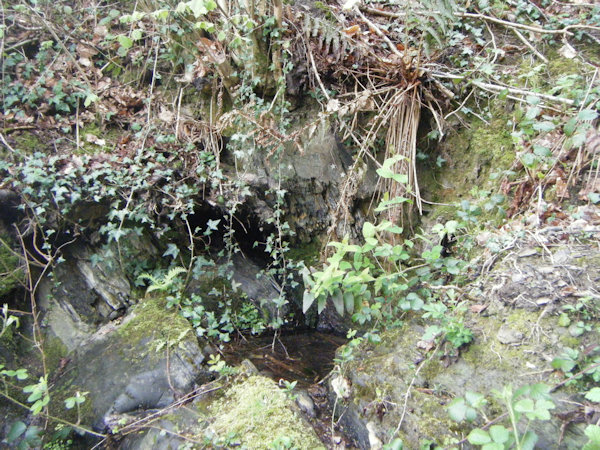 |
Dedication: Saint Cedwyn Location: Trefeglwys Coordinates: 52.4937N, -3.52595W Grid reference: SN964895 Heritage designation: none |
HOME - WALES - MONTGOMERYSHIRE
 |
Dedication: Saint Cedwyn Location: Trefeglwys Coordinates: 52.4937N, -3.52595W Grid reference: SN964895 Heritage designation: none |
Very little is known about the life of St Cedwyn, a minor Welsh saint, most probably of the 6th century, whose cult seems to have been centred in Montgomeryshire. There is no doubt that he founded the parish church of Llangedwyn, only 20 miles away, so it is certainly not implausible that Cedwyn visited Trefeglwys at some point during his lifetime, perhaps then founding the local church, which is dedicated to St Michael, and baptising new converts in this well.
Nothing is recorded regarding the early history of Ffynnon Gedwyn, although it almost certainly dates from the time of the saint. It was one of several holy wells that Edward Lhuyd wrote about in some detail, and the reference that he made to it, dating from the very late 17th century, is the earliest mention of the well's existence that I have come across:
|
A well called Ffynnon Gedwen, the water of it of such vertue being boyled & put in milke breaks it into possett. |
Francis Jones, writing in the 1950s in Holy Wells of Wales, noted that "it was famous for its curative properties", but did not specify which, if any, ailments the well was particularly renowned for curing. Without a doubt, the well would once have been the subject of several traditions that have now been lost to time and a lack of historical documentation.
It is worth noting that the Archwilio database, though it gives the correct grid reference for the site, describes a completely different spring "surmounted by a modern brick cistern with a concrete flagged roof" that certainly is not Ffynnon Gedwyn. The well was one of the few not visited by the Royal Commission in the early 20th century, which may be the source of this confusion.
When I visited the well in the April of 2025, it appeared to be in a very good state of repair. A large quantity of clean water was trickling from a natural cavity in the rock face, into a small, roughly square slate basin that may or may not be man-made. From here, water proceeded to issue down a probably man-made stone chute to create a small stream that flowed down the hillside. Intriguingly, I noticed several carved initials, probably of either a Victorian or early 20th century date, on the stone face above the basin; perhaps these are the initials of thankful votaries who believed that they had been cured through use of the well's water.
Ffynnon Gedwyn has always been marked on Ordnance Survey maps, although it has never been named.
|
Access: The well is located at the side of the road leading to Ffynnon Gedwyn, a house of the same name. |
Copyright 2025 britishholywells.co.uk